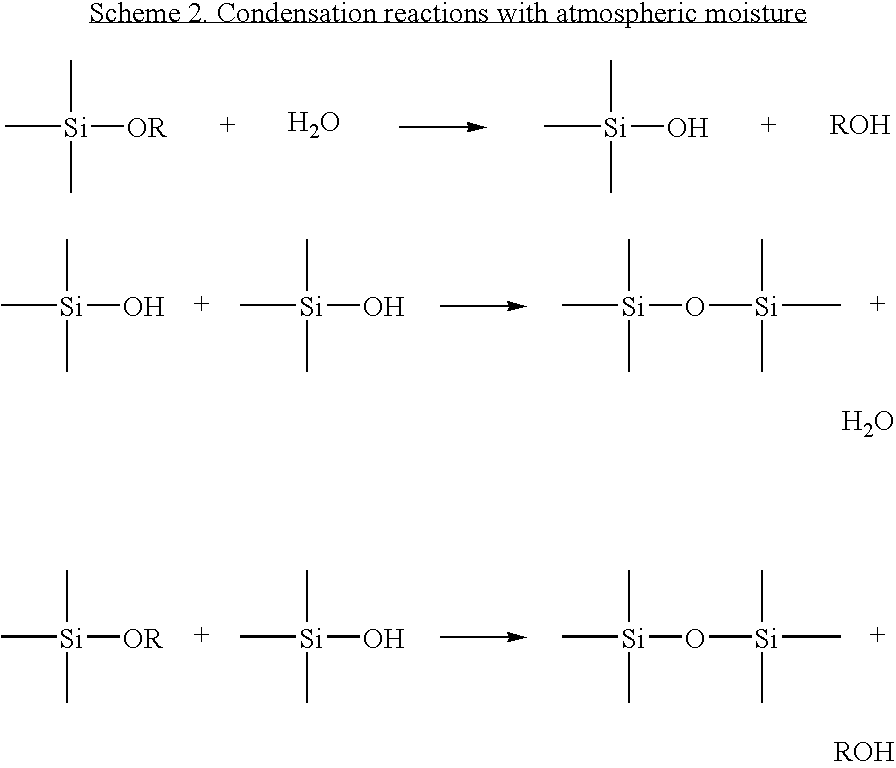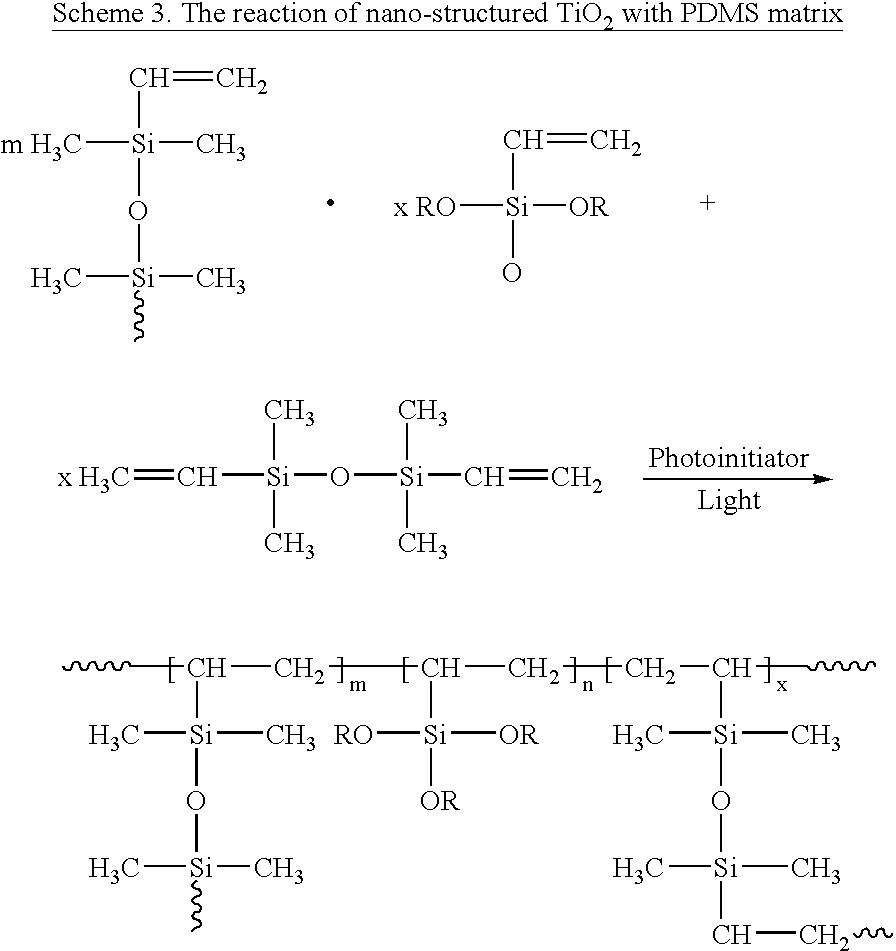Coating compositions for marine applications and methods of making and using the same
a technology for coating compositions and marine applications, applied in the direction of superimposed coating processes, liquid/solution decomposition chemical coatings, manufacturing tools, etc., can solve the problems of marine ships losing a lot of energy, increasing fuel consumption, and reducing speed/efficiency, so as to reduce the biofouling effect of marine vessels
- Summary
- Abstract
- Description
- Claims
- Application Information
AI Technical Summary
Benefits of technology
Problems solved by technology
Method used
Image
Examples
example 1
Thermal Spraying of Alumina (Al2O3) / titania (TiO2)
[0030]Nano-grained alumina / titania (Inframat) materials were used as feedstock. An air plasma spray system (9 MB-gun, Sulzer-Metco) was employed to apply a coating to carbon steel substrates using multiple passes. Each substrate was heated up to a temperature above 80° C. in a preheating process. The resultant layers had a density of more than 95% and a normal thickness of 200-250 millimeters (mm). The typical plasma spraying parameters for the materials are given as below:[0031]Plasma gases: Primary gas Ar, 100 pounds per squared inch (PSI), 80 standard cubic foot per hour (SCFH)[0032]Secondary gas H2, 50 PSI.[0033]Plasma power: 600 Amperes (A) / 65 Volts (V)[0034]Standoff distance: 3 inches[0035]Gun speed: traverse speed of 1000 mm / s; vertical speed of 8 mm / s[0036]Powder feed rate: 3 pounds / hour (lb / hr)
example 2
Thermal Spraying of Al2O3 / TiO2+CeO2+YSZ
[0037]Nano-grained alumina / titania (87:13 weight ratio) with addition of 8-10 weight percent (wt %) ZrO2 and 6-8 wt % CeO2 (Nanox™ S2613S, Inframat) material was used as feedstock. An air plasma spray system (9 MB-gun, Sulzer-Metco) was employed to apply a coating to carbon steel substrates using multiple passes. Each substrate was heated up to a temperature above 80° C. in a preheating process. The resultant layers had a density of more than 95% and a normal thickness of 200-250 mm. The typical plasma spraying parameters for the material are given as below:[0038]Plasma gases: Primary gas Ar, 100 PSI, 80 SCFH[0039]Secondary gas H2, 50 PSI.[0040]Plasma power: 600 A / 65 V[0041]Standoff distance: 3 inches[0042]Gun speed: traverse speed of 1000 mm / s; vertical speed of 8 mm / s[0043]Powder feed rate: 3 lb / hr
example 3
Thermal Spraying of Al2O3
[0044]Commercial alumina (Sulzer-Metco) and nano-grained alumina (Infrox™ S2601) materials were used as feedstock. An air plasma spray system (9 MB-gun, Sulzer-Metco) was employed to apply a coating to carbon steel substrates using multiple passes. Each substrate was heated up to a temperature above 80° C. in a preheating process. The resultant layers had a density of more than 95% and a normal thickness 200-250 mm. The typical plasma spraying parameters for the materials are given as below:[0045]Plasma gases: Primary gas Ar, 100 PSI, 100 SCFH[0046]Secondary gas H2, 50 PSI.[0047]Plasma power: 600 A / 70 V[0048]Standoff distance: 3 inches[0049]Gun speed: traverse speed of 1000 mm / s; vertical speed of 8 mm / s[0050]Powder feed rate: 2.5 lb / hr
PUM
| Property | Measurement | Unit |
|---|---|---|
| length | aaaaa | aaaaa |
| temperature | aaaaa | aaaaa |
| thickness | aaaaa | aaaaa |
Abstract
Description
Claims
Application Information
 Login to View More
Login to View More - R&D
- Intellectual Property
- Life Sciences
- Materials
- Tech Scout
- Unparalleled Data Quality
- Higher Quality Content
- 60% Fewer Hallucinations
Browse by: Latest US Patents, China's latest patents, Technical Efficacy Thesaurus, Application Domain, Technology Topic, Popular Technical Reports.
© 2025 PatSnap. All rights reserved.Legal|Privacy policy|Modern Slavery Act Transparency Statement|Sitemap|About US| Contact US: help@patsnap.com



